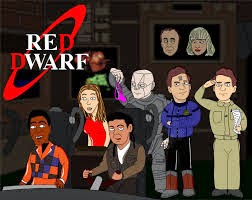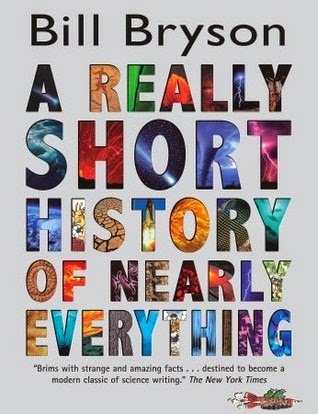Top Ten Amazing Space Facts!
(Boost your general knowledge!)
I’ve had my nose buried in the books this week, as I’ve
somewhat belatedly rediscovered my love for science (which has luckily coincided
with writer’s block!).
My only regret is that I didn’t study this stuff more
when I was younger (hating being stuck in school was probably one reason for
that – ironic isn’t it!), as now my memory is rather damaged...
At least I
suppose one benefit of having a poor memory is being able to enjoy the same
thing again and again, like when my mother watches repeats of murder mysteries
on TV as she can never remember ‘who dunnit’ in the first place!
Currently on the tables next to my bed, sofa and in the
kitchen are the following brilliant books:
‘History Year by Year’ and ‘The Natural History Book’ from
DK Publishing, the ‘Space’, ‘Body’ and ‘Science’ Encyclopedias from Miles
Kelly, and (also highly recommended) Bill Bryson’s 'A Short History of Nearly Everything' – no other book is as
informative and amusing at the same time!
Some of the things I’ve recently learned from the above books
are just as remarkable as anything I’ve ever read in any fiction.
Over the next few weeks I’ll be sharing this information with you in the form of the 'Top Ten Amazing Facts' that I can find, starting today with
the ‘Space Encyclopedia’ which covers everything from unimaginably small electrons
whizzing around inside atoms to clusters of galaxies spreading out over trillions
and trillions of kilometers.
It also tells us about the Earth, what it’s made
of, its atmosphere, the tides, you name it! For instance, have a chew on these
amazing space-related facts...
 |
| A Concise Space Encyclopedia |
Top Ten Space facts
Space Fact 10: Crazy Cosmonaut
Cosmonaut Valeri Poliakov spent 437 consecutive days in space! He couldn’t even walk when he landed back on Earth because of the return to gravity. If the air pressure on his spacecraft were to break, his blood would have boiled! To remain in orbit 200km above Earth, he had to fly at 8 km per second. Check out this clip of footage taken by astronauts from space: |
| Footage of Earth from space |
Space Fact 9: Voyager Catapult
The Voyager 2 probe has already flown over 10 billion km from Earth and is still going. It uses the gravity of planets it passes by to catapult it onwards. |
| Learn more about the Voyager 2 space probe |
Space Fact 8: Scouse Astronomy
You can see about 2000 stars at night with the ‘naked’ eye. You can only ever see 3% of what is in the universe, as the rest is dark energy and matter... Galileo was the first person to recognise the Milky Way through a telescope, describing it as ‘conergies of innumerable stars.’
My own
hero of astronomy is Jeremiah Horrocks of Liverpool, who was the first person
to predict and chart the transit of Venus aged just 19 years old! (if you ever visit the World Museum Liverpool, they have a really cool exhibit about him next to the Planetarium).
 |
| Read here about the remarkable life of Jeremiah Horrocks |
Space Fact 7: Far, far away...
Light travels at 300,000 km per second (it takes 8 minutes for light to reach us from the sun). Space is so big that distances are measured in light years (ly) with 1 ly being 9.5 trillion km(!!!).Space Fact 6: Seeing into the past!
Since the Big Bang 14 billion years ago, most galaxies have been moving outwards, with some travelling at 90% the speed of light. When your TV goes fuzzy, you are in fact watching cosmic radiation from the start of the universe itself.When you are looking at the stars and galaxies, you are
effectively looking back in time. For instance, the star Deneb is 1800ly away,
so you are seeing it as it was in the time of Roman Emperor Septimus Severius
in 200AD. However, the most powerful telescopes can see galaxies 2 billion(!)
ly away.
Space Fact 5: We are made of star dust?
A supernova (exploding star) releases 125,000 trillion times the energy that came from the murderous Hiroshima bomb and shines brighter than 100 billion stars combined! They only last for less than a week and many of the elements that make up our bodies (such as carbon and iron) actually come from them. |
| Supernova Explosion |
Even brighter than a supernova is a quasar, which can glow as brightly
as 100 galaxies and has the mass of a hundred million suns due to the black
hole at its center.
 |
| Click here to learn more about Quasars |
Space Fact 4: Death by sand!
The heart of a star can reach 16 million degrees Celsius. A grain of sand at this temperature would burn you to death from 150 km away (COOL!). |
| Inside a star - how hot can it get? |
Space Fact 3: Magnetic Whiskers
Neutron (collapsed) stars are so dense that just a table spoon of one weighs about a million tons. They have incredibly strong magnetic fields (billions of times stronger than that of the Earth) which stretch atoms out into ‘frizzy’ whiskers on the star’s surface. Because neutron stars are so dense they have an enormous gravitational pull for such small space objects (they sometimes only measure about 20 km across).Isaac Newton’s theory on
gravity and his 3 other laws of motion have helped astronomers work out the pull
and movement of every planet, star and galaxy they can see in the universe. He
was one of the cleverest people who ever lived, but he also stared at the sun
and stuck a spike in through his eye socket just to see what would happen – an eccentric
genius eh.
 |
| Find out more about the eccentric genius Isaac Newton |
Space Fact 2: Human Spaghetti
Black holes have so much gravity that they keep entire galaxies intact and spinning around them. Indeed, the reason most galaxies are brighter in the middle is because light cannot escape a black hole so it ‘sticks’ on its ‘event horizon’ (edge).
If a human were sucked into a black hole, they would be
stretched out like spaghetti. Black holes (sucking you in) and white holes (spitting
you out) can join together to form ‘wormholes’ which can distort space and
time, as the crew of the Red Dwarf discovered in Season 6's hilarious 'Rimmerworld'.
 |
| The Red Dwarf crew |
Space Fact 1: Out of reach...
There are over 500 billion galaxies in the universe, each one containing up to trillions of stars. The Milky Way is 100,000 ly across and 1000 ly deep, containing over 100 billion stars. The sun takes 200 million years to orbit around it and the next nearest star to us is trillions of kilometers away.
It appears quite a challenge for
aliens to visit us after all, and if they went to the trouble of travelling all
that way, do you think they’d just hover in the sky for a moment and disappear
again? Or maybe they do because they just don’t like the look of us... which is
understandable!
 |
| Our galaxy: the Milky Way |
Well, there you have it. I highly recommend that you take a break from whatever fiction you’re in the middle of (unless it's one of my books!) and also learn more about the ‘the miracle of science and nature’ and our place in the universe and how it works (we can never know enough eh).
Space
distances, the size and number of galaxies, the speed and age of the Earth, if
we’re not finding out about this stuff or aware that we can actually be experiencing
it all around us, then are we spending our time here wisely?
Do you have any Amazing Space Facts to share? Let us know...



No comments:
Post a Comment